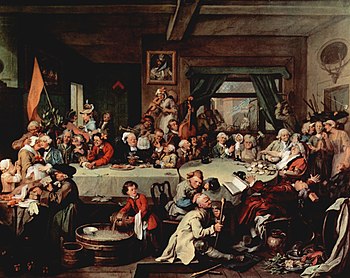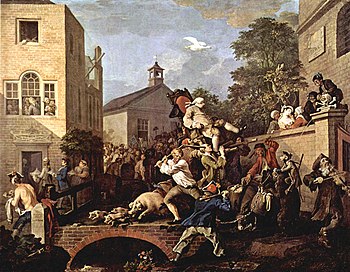
The 1840 United States presidential election was the 14th quadrennial presidential election, held from Friday, October 30 to Wednesday, December 2, 1840. Economic recovery from the Panic of 1837 was incomplete, and Whig nominee William Henry Harrison defeated incumbent President Martin Van Buren of the Democratic Party. The election marked the first of two Whig victories in presidential elections, but was the only one where they won a majority of the popular vote. This was the third rematch in American history, which would not occur again until 1892.

The 1860 United States presidential election was the 19th quadrennial presidential election, held on Tuesday, November 6, 1860. In a four-way contest, the Republican Party ticket of Abraham Lincoln and Hannibal Hamlin, absent from the ballot in ten slave states, won a national popular plurality, a popular majority in the North where states already had abolished slavery, and a national electoral majority comprising only Northern electoral votes. Lincoln's election thus served as the main catalyst of the states that would become the Confederacy seceding from the Union. This marked the first time that a Republican was elected president.

Sir James Thornhill was an English painter of historical subjects working in the Italian baroque tradition. He was responsible for some large-scale schemes of murals, including the "Painted Hall" at the Royal Hospital, Greenwich, the paintings on the inside of the dome of St Paul's Cathedral, and works at Chatsworth House and Wimpole Hall.
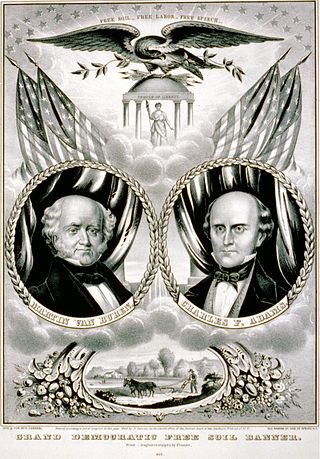
The Free Soil Party was a short-lived coalition political party in the United States active from 1848 to 1854, when it merged into the Republican Party. The party was largely focused on the single issue of opposing the expansion of slavery into the western territories of the United States.

The Unionist Party was the main centre-right political party in Scotland between 1912 and 1965.
The Tories were a loosely organised political faction and later a political party, in the Parliaments of England, Scotland, Ireland, Great Britain and the United Kingdom. They first emerged during the 1679 Exclusion Crisis, when they opposed Whig efforts to exclude James, Duke of York from the succession on the grounds of his Catholicism. Despite their fervent opposition to state-sponsored Catholicism, Tories opposed exclusion in the belief inheritance based on birth was the foundation of a stable society.

Canvassing is the systematic initiation of direct contact with individuals, commonly used during political campaigns. Canvassing can be done for many reasons: political campaigning, grassroots fundraising, community awareness, membership drives, and more. Campaigners knock on doors to contact people personally. Canvassing is used by political parties and issue groups to identify supporters, persuade the undecided, and add voters to the voters list through voter registration, and it is central to get out the vote operations. It is the core element of what political campaigns call the ground game or field.
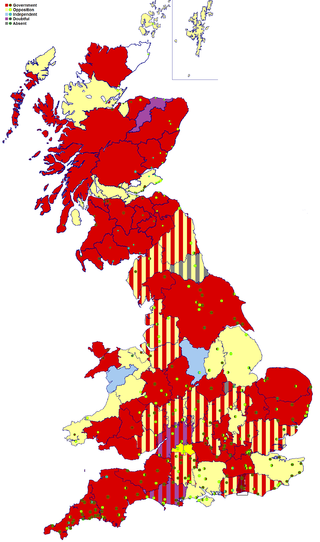
The 1784 British general election resulted in William Pitt the Younger securing an overall majority of about 120 in the House of Commons of Great Britain, having previously had to survive in a House which was dominated by his opponents.

In the 19th century, a number of new methods for conducting American election campaigns developed in the United States. For the most part the techniques were original, not copied from Europe or anywhere else. The campaigns were also changed by a general enlargement of the voting franchise—the states began removing or reducing property and tax qualifications for suffrage and by the early 19th century the great majority of free adult white males could vote. During the Reconstruction Era, Republicans in Congress used the military to create a biracial electorate, but when the troops were removed in 1877, blacks steadily lost political power in the increasingly one-party Southern United States. After 1890 blacks generally lost the vote in the South.
Buckinghamshire is a former United Kingdom Parliamentary constituency. It was a constituency of the House of Commons of the Parliament of England then of the Parliament of Great Britain from 1707 to 1800 and of the Parliament of the United Kingdom from 1801 to 1885.

Westminster was a parliamentary constituency in the Parliament of England to 1707, the Parliament of Great Britain 1707–1800 and the Parliament of the United Kingdom from 1801. It returned two members to 1885 and one thereafter.
The 1768 British general election returned members to serve in the House of Commons of the 13th Parliament of Great Britain to be held, after the merger of the Parliament of England and the Parliament of Scotland in 1707.
East Retford was a parliamentary constituency in Nottinghamshire, which elected two Members of Parliament (MPs) to the House of Commons for the first time in 1316, and continuously from 1571 until 1885, when the constituency was abolished. Although East Retford was technically a parliamentary borough for the whole of its existence, in 1830 its franchise had been widened and its boundaries had been extended to include the whole Wapentake of Bassetlaw as a remedy for corruption among the voters, and from that point onward it resembled a county constituency in most respects.
Wootton Bassett was a parliamentary borough in Wiltshire, which elected two Members of Parliament (MPs) to the House of Commons from 1447 until 1832, when the rotten borough was abolished by the Great Reform Act.
George Evans, 1st Baron Carbery PC (Ire) was an Anglo-Irish politician and peer. A member of a County Limerick family of Whigs, he entered the Irish House of Commons and was created a peer in 1715 as a reward for his father's support of the Hanoverian succession, after his father declined the offer. At the same time, he was returned to the British House of Commons for Westbury. He contested control of the borough with the Tories led by the Earl of Abingdon until 1727, when he stood down.

A mock election is an election for educational demonstration, amusement, or political protest reasons to call for free and fair elections. Less precisely it can refer to a real election purely for advisory committees or forums such as some student councils, particularly those that chiefly emulate a real legislative body.
Norfolk was a County constituency of the House of Commons of the Parliament of England then of the Parliament of Great Britain from 1707 to 1800 and of the Parliament of the United Kingdom from 1801 to 1832. It was represented by two Members of Parliament. In 1832 the county was divided for parliamentary purposes into two new two member divisions – East Norfolk and West Norfolk.
The Oxfordshire Election of 1754, part of the British general election of that year and involving the selection of two Members of Parliament (MPs) to represent the Oxfordshire constituency, was probably the most notorious English county election of the 18th century. It was depicted in Hogarth's famous series of paintings and engravings, The Humours of an Election.
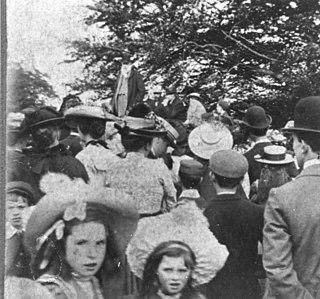
Sir Wilfrid Lawson, 1st Baronet, of Brayton, was an English landowner, businessman and investor in the new industrial age. He was of the Lawson baronets.
Robert Monckton was an English landowner and Whig politician who sat in the English and British House of Commons between 1695 and 1713. He took an active part supporting William of Orange in the Glorious Revolution, and was notable for his involvement in a number of exceptionally bitter and prolonged electoral disputes.
